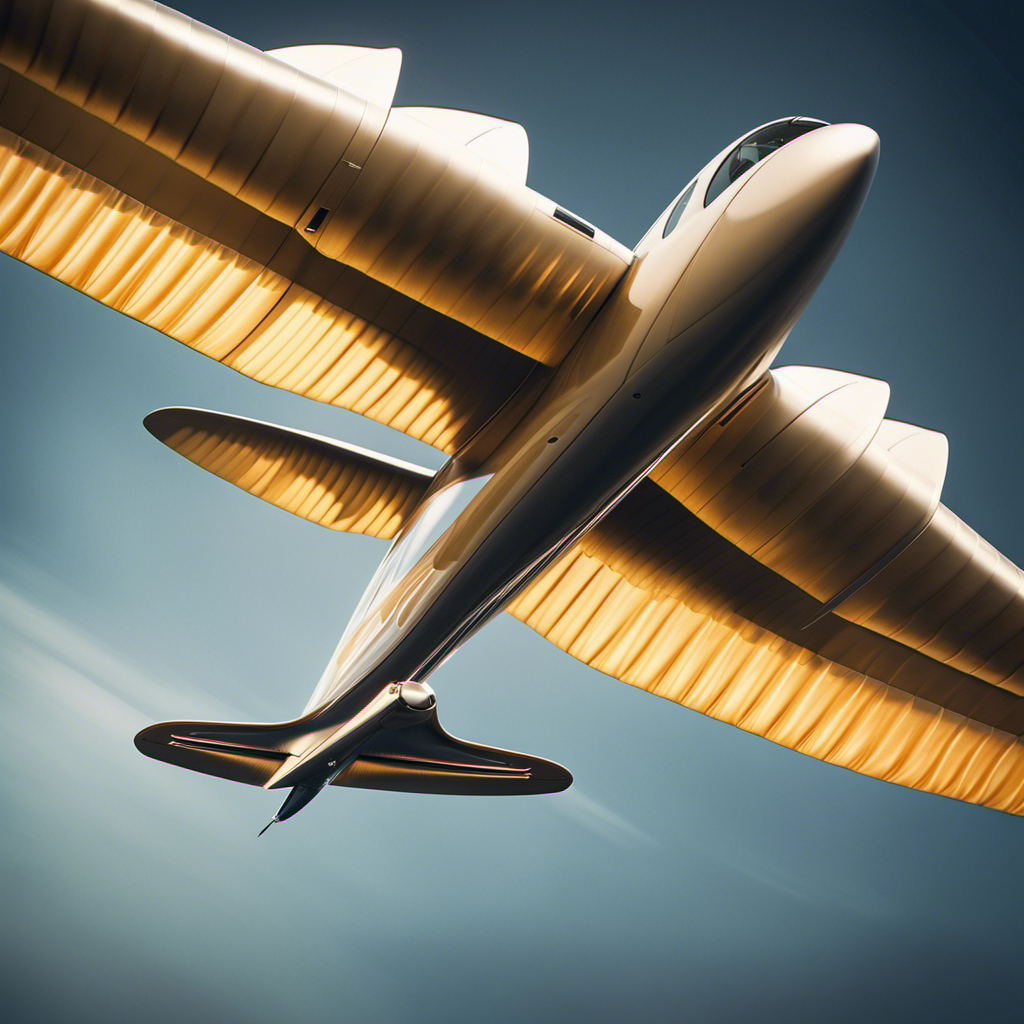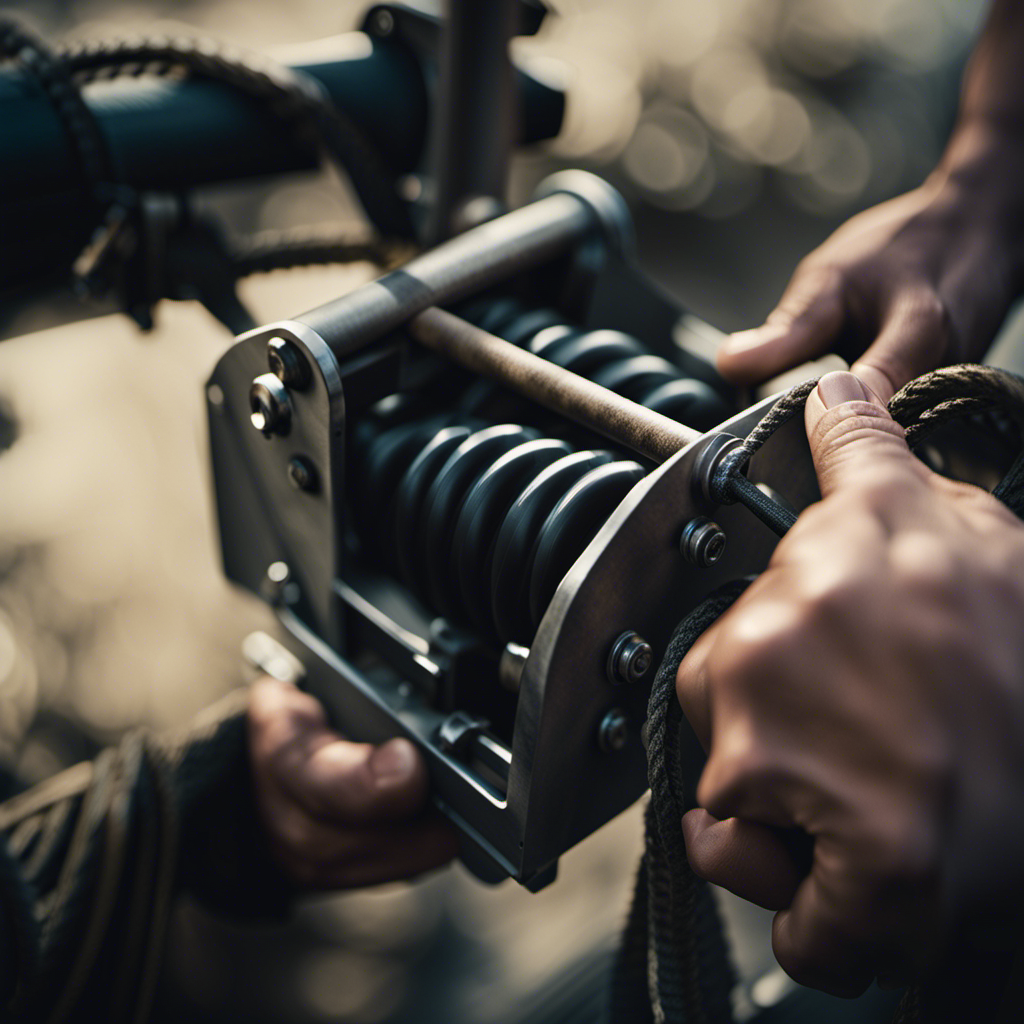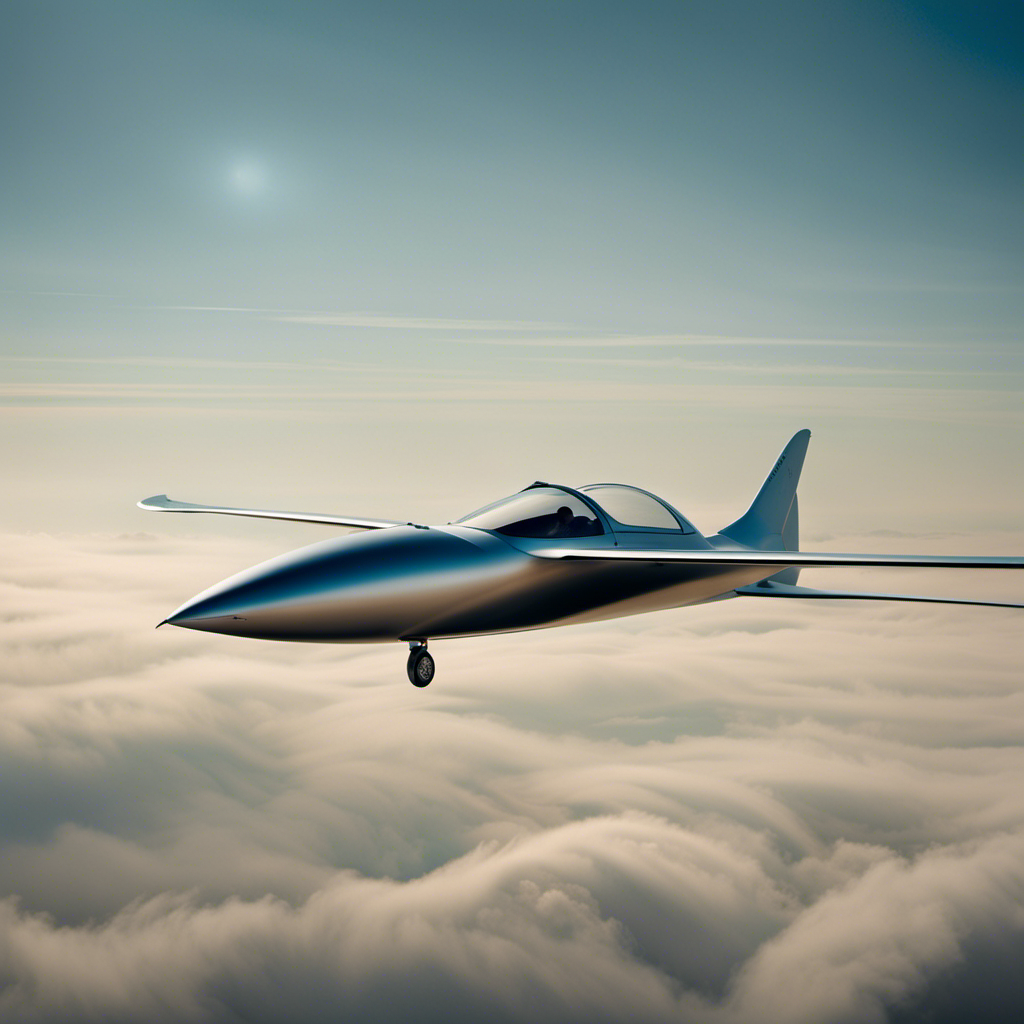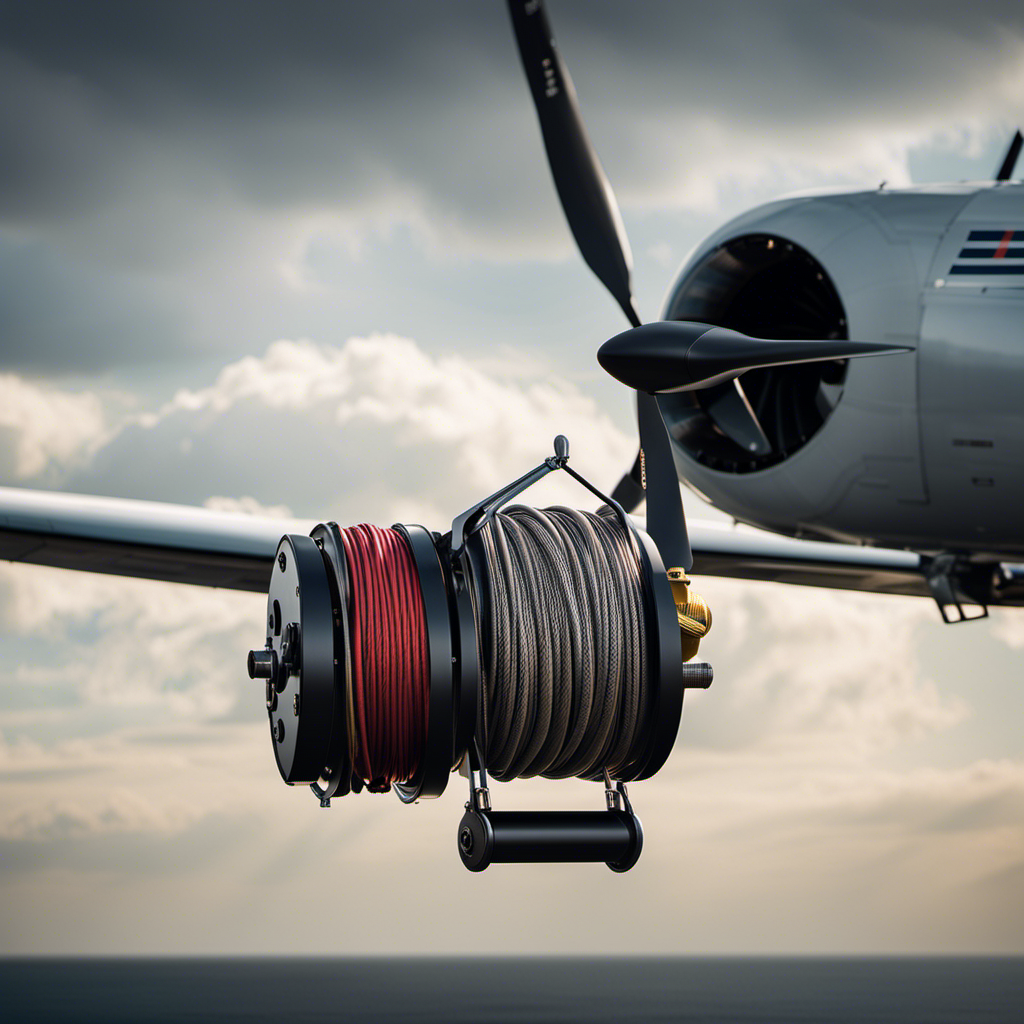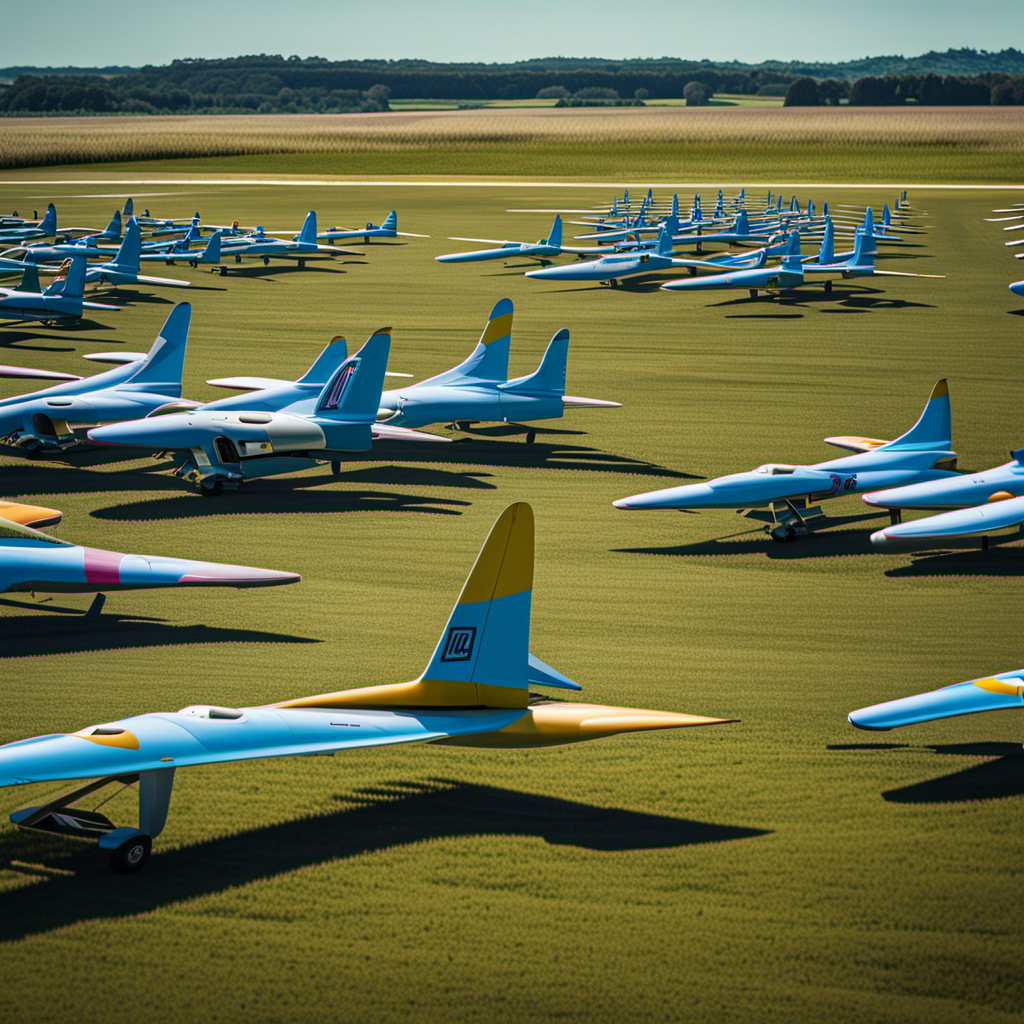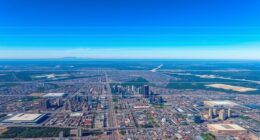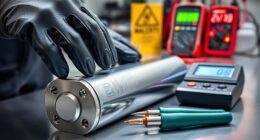As someone piloting a glider, you could be curious about the role of drag in its operation. I can confidently say that drag is essential for the maneuvering and steering of a glider.
In this article, we will explore the concept of drag in aerodynamics and delve into how it affects a glider’s performance. We’ll examine the different types of drag experienced by a glider, such as form drag and skin friction drag, and discuss how these forces influence maneuverability and control.
Additionally, we’ll explore the advantages and limitations of using drag in glider flight and explore potential advancements in drag reduction techniques.
So, let’s soar into the world of glider aerodynamics and uncover the mysteries of drag.
Key Takeaways
- Drag is a force that opposes motion in the air and is generated by the interaction between the glider’s shape and air molecules.
- Different types of drag experienced by a glider include parasitic drag, induced drag, wave drag, and interference drag.
- Form drag, also known as pressure drag, is caused by the glider’s shape and higher form drag reduces speed and efficiency.
- Skin friction drag occurs when the glider’s surface interacts with air molecules and can be reduced by smoother surfaces and laminar flow.
Explanation of the concept of drag in aerodynamics
You need to understand how drag works in aerodynamics to appreciate how a glider uses it.
Drag is a force that acts opposite to the direction of motion and it affects the performance of the glider. When the glider moves through the air, drag is generated due to the interaction between the glider’s shape and the air molecules. This drag force opposes the motion of the glider and limits its speed and efficiency.
The amount of drag depends on various factors such as the shape of the glider, its size, and the speed at which it is flying. By understanding and managing drag, glider pilots can optimize their flight performance and increase their gliding range.
Now, let’s explore how drag affects the movement of a glider.
How drag affects the movement of a glider
The amount of drag affects how a glider moves through the air. When designing a glider, it is crucial to consider the aerodynamic principles that govern drag. Here are four key factors to understand:
-
Shape: The design of the glider’s fuselage, wings, and tail greatly influences the amount of drag it experiences. Streamlined shapes minimize drag, allowing the glider to move more efficiently through the air.
-
Surface Texture: Smooth surfaces reduce the friction between the glider and the air, reducing drag. Careful attention to surface finishes and coatings can significantly decrease drag.
-
Wing Aspect Ratio: The aspect ratio, which is the ratio of a wing’s span to its average chord, affects drag. Higher aspect ratio wings generally produce less drag, resulting in improved gliding performance.
-
Airfoil Design: The shape of the airfoil, or cross-section, of the wings plays a vital role in managing drag. Optimized airfoil designs can minimize both form drag and induced drag.
Understanding these factors is essential for optimizing glider design and maximizing performance.
Now, let’s explore the different types of drag experienced by a glider.
Different types of drag experienced by a glider
There are several types of drag that a glider experiences during flight. These different types of drag have a significant impact on glider performance and can affect its ability to stay aloft and glide efficiently. To better understand the various types of drag, let’s take a look at the following table:
| Type of Drag | Description |
|---|---|
| Parasitic Drag | Caused by the friction between the glider’s surface and the surrounding air. It includes form drag, skin friction drag, and interference drag. |
| Induced Drag | Generated by the creation of lift. As the glider generates lift, it also creates vortices at the wingtips, resulting in induced drag. |
| Wave Drag | Occurs when a glider reaches high speeds and encounters shockwaves. These shockwaves create additional drag. |
| Interference Drag | Arises when two or more components of the glider’s structure intersect and disrupt the smooth flow of air. |
Understanding these different types of drag is crucial for glider pilots and designers. By identifying the sources of drag, they can implement drag reduction techniques to improve glider performance. Now, let’s dive deeper into the concept of form drag and its effects on a glider’s flight.
Form drag
Form drag, also known as pressure drag, is caused by the shape of the glider’s surface and the resulting air pressure differences. It is an important factor that affects the performance of a glider.
The shape of the glider’s surface determines the amount of form drag experienced. A streamlined shape will minimize form drag, while a bulky or irregular shape will increase it. The impact of form drag on glider performance can be significant.
Higher form drag means more energy is required to overcome it, resulting in reduced speed and efficiency. To reduce form drag, glider designers aim to create sleek and aerodynamic shapes that minimize air pressure differences. By carefully considering the design and streamlining the surface, form drag can be minimized, allowing the glider to perform better in terms of speed and efficiency.
This reduction in form drag sets the stage for the next type of drag, known as skin friction drag.
Skin friction drag
Skin friction drag occurs when the surface of the glider interacts with the air molecules. This type of drag is influenced by the smoothness of the glider’s surface and the flow of the air around it. Here are four key points to help you understand skin friction drag:
-
Surface smoothness: A smoother surface reduces skin friction drag by allowing the air molecules to flow more smoothly over the glider’s surface.
-
Laminar flow: Laminar flow is a type of airflow where the air molecules move in parallel layers. Maintaining laminar flow over the glider’s surface helps reduce skin friction drag.
-
Boundary layer: The boundary layer is the thin layer of air that forms on the glider’s surface. A thinner boundary layer reduces skin friction drag.
-
Drag reduction techniques: To minimize skin friction drag, glider manufacturers employ techniques such as using smooth coatings or polishing the surface.
Understanding skin friction drag is crucial because it directly affects the glider’s performance and efficiency.
Transitioning to the next section, let’s now explore the concept of induced drag.
Induced drag
Induced drag occurs when the wings of an aircraft generate lift, resulting in a drag force that opposes the forward motion. This type of drag is directly related to the lift being generated.
As an aircraft generates lift, it also creates vortices at the wingtips, which increase the pressure difference between the upper and lower surfaces of the wing. This pressure difference creates a downward force, known as induced drag.
The magnitude of induced drag is influenced by various factors such as the wing aspect ratio, angle of attack, and airspeed. To minimize induced drag, gliders employ techniques such as using high aspect ratio wings, flying at optimal speeds, and reducing the angle of attack.
How a glider minimizes drag to maximize flight efficiency
To maximize your glider’s flight efficiency, focus on minimizing the factors that contribute to drag. Glider design plays a crucial role in achieving optimal aerodynamic efficiency. By carefully considering the shape and configuration of the glider, we can reduce drag and improve performance.
One key aspect of glider design is the choice of airfoil shape. A streamlined airfoil with a high lift-to-drag ratio can significantly reduce drag. Additionally, minimizing the surface area exposed to the airflow, such as through the use of streamlined fuselages and winglets, can further reduce drag.
Another important factor to consider is the smoothness of the glider’s surface. Any imperfections or roughness can create turbulence and increase drag. By paying attention to these design elements, we can create a glider that is optimized for efficient flight.
Now, let’s delve into the next section and explore ways to streamline the aircraft even further.
Streamlining the aircraft
In order to maximize flight efficiency, gliders employ various streamlining techniques to reduce aerodynamic resistance.
By minimizing drag, the glider can maintain its velocity and sustain flight for longer periods. One streamlining technique used is the optimization of the glider’s shape. By designing a sleek and slender fuselage, the glider can minimize the frontal area exposed to the oncoming airflow, reducing drag.
Additionally, the glider’s wings are carefully contoured to minimize turbulence and reduce drag. This is achieved by incorporating wingtip devices, such as winglets, which help to reduce the formation of vortices that contribute to drag.
By implementing these streamlining techniques, gliders can significantly enhance their aerodynamic performance and increase their flight range.
To further reduce drag, gliders also employ techniques to reduce surface roughness, which will be discussed in the subsequent section.
Reducing surface roughness
By smoothing out the surface of your glider, you can minimize air resistance and improve its overall aerodynamic performance. Reducing surface roughness is crucial for achieving laminar flow optimization, where the air flows smoothly over the glider’s surface without separating or creating turbulence.
This can be achieved through the following methods:
- Polishing the surface of the glider to remove imperfections and irregularities.
- Applying special coatings that reduce surface roughness and promote laminar flow.
Reducing surface roughness is essential because it reduces the drag caused by friction between the glider and the surrounding air. By minimizing drag, the glider can achieve higher speeds and better fuel efficiency.
Transitioning into the subsequent section about ‘using high aspect ratio wings,’ this method further enhances aerodynamic performance and reduces drag by increasing the glider’s lift-to-drag ratio.
Using high aspect ratio wings
By incorporating high aspect ratio wings into your design, you’ll experience improved lift-to-drag ratio, which enhances your glider’s overall aerodynamic performance. Maximizing efficiency and improving performance are crucial goals in glider design.
High aspect ratio wings have a longer span compared to their chord length, allowing for higher lift generation and reduced drag. This design feature increases the glider’s ability to stay aloft for longer periods and travel further distances. The longer wing span creates a larger lifting surface, which generates more lift with less drag.
As a result, the glider can maintain a higher glide ratio, allowing for more efficient soaring and extended flight times.
Now, let’s discuss the next aerodynamic improvement technique – employing winglets.
Employing winglets
To enhance the aerodynamic performance of your design, consider employing winglets. Winglets are wingtip devices that can reduce induced drag and improve the efficiency of your glider’s wings. They help to minimize the formation of vortices at the wingtips. These vortices, known as induced drag, are created when high-pressure air from the bottom of the wing spills over to the low-pressure area on top, creating a swirling motion.
By attaching winglets at the wingtips, they help to disrupt the formation of these vortices, reducing induced drag and improving overall efficiency. The use of winglets is a common technique in glider design, along with employing other vortex generators and wingtip devices, to optimize aerodynamic performance.
Now let’s explore the role of lift-to-drag ratio in glider performance.
The role of lift-to-drag ratio in glider performance
Understanding the importance of the lift-to-drag ratio can greatly improve your glider’s performance.
The lift-to-drag ratio, often abbreviated as L/D, is a measure of how efficiently a glider converts lift into forward motion while minimizing drag.
It is crucial for maximizing glide distance and minimizing sink rate.
A high L/D ratio means that the glider can travel a greater distance for a given amount of altitude loss.
This is essential for glider pilots who want to stay in the air for as long as possible and cover large distances.
By optimizing the design of the glider, such as reducing drag-producing features like protrusions or gaps, and using techniques like maintaining the proper airspeed and flying in areas with favorable wind conditions, glider pilots can effectively manage drag during flight.
This allows them to maintain a high lift-to-drag ratio, resulting in improved glider performance and longer, more efficient flights.
Techniques used by glider pilots to manage drag during flight
Transition: Now that we understand the importance of lift-to-drag ratio in glider performance, let’s delve into the techniques used by glider pilots to manage drag during flight.
Current Subtopic: As a glider pilot, managing airflow and reducing resistance are crucial for achieving optimal performance. Here are five techniques I employ to minimize drag and maximize efficiency:
- Streamlining the aircraft: By ensuring smooth and clean surfaces, I reduce the formation of turbulent airflows that generate drag.
- Minimizing gaps and seams: I pay close attention to sealing any gaps or seams in the aircraft’s structure to prevent air leaks and reduce drag.
- Controlling control surfaces: Properly aligning and adjusting the ailerons, elevators, and rudder helps me maintain precise control while minimizing unnecessary drag.
- Using efficient airfoil designs: Employing airfoils with low drag characteristics allows me to maximize lift while minimizing drag.
- Maintaining proper wing loading: By ensuring the glider is neither too heavy nor too light, I optimize its performance and reduce drag.
Now, let’s explore the next section on optimizing airspeed by understanding the importance of maintaining a steady and controlled pace throughout the flight.
Optimizing airspeed
When optimizing airspeed, your focus should be on maintaining a steady and controlled pace throughout your flight. This is crucial for optimizing glide ratio and reducing drag effects. By carefully managing your airspeed, you can enhance the efficiency of your glider and maximize your flying time.
One technique that can be employed is to adjust the airspeed based on the current conditions and the desired performance. For instance, flying at a slightly higher airspeed can help reduce the effects of turbulence and increase stability. On the other hand, flying at a lower airspeed can improve the glide ratio and allow for better energy conservation. It’s important to find the right balance and make adjustments as needed.
By optimizing airspeed, you can enhance your overall gliding experience and make the most out of your flight time.
Transitioning into the subsequent section about utilizing thermals and updrafts, understanding how to best utilize these natural phenomena is another key aspect of glider flight.
Utilizing thermals and updrafts
Utilizing thermals and updrafts can significantly increase the altitude and duration of your glider flight. By utilizing dynamic lift, we can exploit thermal currents to gain altitude and extend our time in the air.
Thermals are pockets of warm, rising air that can be found on sunny days, usually above areas with dark surfaces such as asphalt or plowed fields. When the sun heats the ground, the air above it also warms up and begins to rise, creating an updraft. As glider pilots, we can detect these thermals by observing the behavior of birds or by using variometers that measure the rate of climb.
By skillfully maneuvering our gliders into these thermal currents, we can harness their power and gain altitude. This allows us to stay aloft for longer periods, increasing our chances of completing a successful flight.
Transitioning into the next section about employing efficient glider handling techniques, it is crucial to master the art of controlling the glider with precision and finesse.
Employing efficient glider handling techniques
To improve your glider handling skills, it’s important to develop a sense of finesse and precision in controlling the aircraft. Glider efficiency is maximized when proper handling techniques are employed.
One key technique is maintaining a constant airspeed during level flight. By monitoring the glider’s airspeed indicator and making small adjustments to the control surfaces, such as the elevator and ailerons, pilots can ensure a smooth and efficient flight.
Additionally, using coordinated turns, where the rudder and ailerons are used together, reduces drag and maximizes glider performance.
Another important technique is minimizing control inputs during thermalling, as excessive movements can lead to increased drag and decreased efficiency.
By mastering these handling techniques, glider pilots can optimize their aircraft’s performance and increase their chances of success in the air.
Now, let’s explore the effects of external factors on drag in glider flight.
The effects of external factors on drag in glider flight
As a glider pilot, understanding the effects of external factors on drag in glider flight is crucial for optimizing performance and safety. Various factors such as wind, temperature, and altitude can significantly impact the glider’s drag characteristics. Let’s examine these factors in a table below:
| External Factor | Effect on Drag |
|---|---|
| Wind | Can create both headwind and tailwind components, affecting the glider’s airspeed and lift-to-drag ratio. |
| Temperature | Higher temperatures decrease air density, resulting in lower drag. Conversely, colder temperatures increase drag due to higher air density. |
| Altitude | At higher altitudes, air density decreases, leading to lower drag. Conversely, at lower altitudes, air density increases, resulting in higher drag. |
Understanding these external factors allows glider pilots to make informed decisions during flight, optimizing their glider’s performance. Now, let’s explore the impact of wind conditions on glider flight.
Transition: Now that we have examined the effects of external factors on drag, let’s delve into the role of wind conditions in glider flight.
Wind conditions
When you’re flying a glider, understanding wind conditions is essential for optimizing your flight performance. The direction and speed of the wind greatly impact how the glider moves through the air and ultimately affects its performance. Here are three important factors to consider regarding wind patterns and glider performance:
-
Wind direction: Knowing the direction of the wind allows you to plan your flight path accordingly. By flying with a tailwind, you can increase your ground speed and cover more distance. Conversely, flying against a headwind will require more energy and may reduce your overall performance.
-
Wind speed: The speed of the wind affects the lift generated by the glider’s wings. Higher wind speeds can provide stronger lift, allowing you to stay aloft for longer periods and potentially reach higher altitudes. However, excessive wind speeds can also introduce challenges, such as turbulence and increased drag.
-
Wind shear: Wind shear refers to the change in wind speed or direction with altitude. Understanding wind shear patterns is crucial for maximizing glider performance. By utilizing rising air associated with wind shear, you can gain additional lift and improve your flight efficiency.
Considering these wind patterns and their effects on glider performance, we can transition into the subsequent section about air density, which also plays a significant role in optimizing glider flight.
Air density
Understanding air density is crucial for optimizing a glider’s flight performance. Air density is influenced by factors such as altitude and temperature, which directly impact air pressure. In order to generate lift, a glider relies on the difference in air pressure between the upper and lower surfaces of its wings. As air flows over the wings, it moves faster over the curved upper surface, creating a lower pressure compared to the flat lower surface. This pressure difference generates lift, allowing the glider to stay airborne. To further illustrate the relationship between air density and lift generation, consider the following table:
| Altitude (ft) | Temperature (°F) | Air Density (lb/ft³) |
|---|---|---|
| 0 | 59 | 0.075 |
| 5000 | 41 | 0.063 |
| 10000 | 23 | 0.052 |
As altitude increases, air density decreases, resulting in reduced lift generation. This knowledge of air density is essential for pilots to make informed decisions during glider flights. Moving forward, we will now explore the impact of aircraft weight on glider performance.
Aircraft weight
The weight of an aircraft directly affects its flight performance. In aircraft design, weight distribution plays a crucial role in achieving optimal performance. Here are four key points to consider:
-
Stability: Proper weight distribution ensures that the aircraft maintains stability during flight. A well-balanced aircraft is less prone to unexpected pitch or roll movements, providing a safer and more comfortable experience for the pilot and passengers.
-
Maneuverability: The distribution of weight affects the aircraft’s ability to maneuver. By strategically placing heavier components, such as engines or fuel tanks, the pilot can achieve better control and responsiveness, enabling precise turns and maneuvers.
-
Payload capacity: The weight of the aircraft directly impacts its ability to carry cargo or passengers. By carefully managing weight distribution, designers can optimize payload capacity without compromising safety or performance.
-
Fuel efficiency: A lighter aircraft requires less fuel to maintain flight, resulting in improved fuel efficiency and reduced operating costs.
Understanding the impact of weight distribution is essential for aircraft designers and pilots alike.
Now, let’s explore how drag influences glider maneuverability and control.
How drag influences glider maneuverability and control
Proper weight distribution affects how a glider maneuvers and is controlled. The distribution of weight plays a crucial role in determining the glider’s stability, responsiveness, and overall maneuverability. To understand this concept better, let’s explore the relationship between weight distribution and glider control in a table format:
| Weight Distribution | Effect on Maneuverability | Effect on Control |
|---|---|---|
| Forward | Decreased maneuverability | Increased control |
| Aft | Increased maneuverability | Decreased control |
| Balanced | Optimal maneuverability | Balanced control |
As shown in the table, when the weight is distributed forward, maneuverability may be compromised, but control is enhanced. Conversely, when the weight is shifted aft, maneuverability improves, but control becomes more challenging. Achieving a balanced weight distribution ensures optimal maneuverability and control.
Understanding the influence of weight distribution on maneuverability and control sets the stage for exploring the advantages and limitations of using drag in glider flight, which we will delve into next.
The advantages and limitations of using drag in glider flight
Using drag in glider flight has both benefits and constraints.
One advantage of utilizing drag is that it allows gliders to maintain a safe and controllable descent rate during landing. By increasing the drag, pilots can reduce the glider’s speed and descend more gradually, ensuring a smooth touchdown.
Additionally, drag is essential for achieving maximum glide performance. By adjusting the control surfaces and utilizing drag devices such as flaps and spoilers, pilots can optimize the glider’s lift-to-drag ratio, resulting in longer and more efficient glides.
However, there are limitations to relying on drag. Excessive drag can reduce the glider’s overall speed and hinder its ability to climb. Moreover, drag can also increase the stall speed, making it more challenging to maintain control at low speeds.
As we explore the future of glider technology and potential advancements in drag reduction techniques, it becomes evident that minimizing drag while maintaining safety will be a key focus.
The future of glider technology and potential advancements in drag reduction techniques
As we look ahead to the future, advancements in glider technology and drag reduction techniques will play a crucial role.
The potential advancements in glider technology are vast, with researchers and engineers exploring new materials, design concepts, and aerodynamic principles to enhance performance.
In terms of drag reduction techniques, future technologies hold promise for minimizing the drag experienced by gliders during flight. Some potential advancements in this area include:
- Streamlined fuselage design to reduce form drag
- Active flow control systems to manipulate the boundary layer and reduce skin friction drag
- Advances in wingtip technology to minimize induced drag
These advancements in glider technology and drag reduction techniques will not only increase the efficiency and range of gliders but also pave the way for more sustainable and environmentally friendly air travel.
Frequently Asked Questions
How does air density affect drag in glider flight?
The effect of altitude and the influence of temperature on air density affect drag in glider flight. As altitude increases, air density decreases, resulting in reduced drag. Similarly, as temperature increases, air density decreases, further reducing drag.
What are the different types of drag experienced by a glider?
There are three main types of drag experienced by a glider: parasite drag, induced drag, and wave drag. These drag forces affect the glider’s performance by reducing its speed and requiring more energy to overcome.
How do glider pilots manage drag during flight?
Glider pilots manage aerodynamic forces by employing various techniques. They adjust the wing’s angle of attack to control lift and minimize drag. They also use weight shifting and ballast to maintain stability and optimize performance during flight.
How does drag influence glider maneuverability and control?
As the saying goes, "Smooth skies make skilled pilots." Glider stability is greatly influenced by drag. The impact of weight on drag affects maneuverability and control, requiring careful management for optimal performance in flight.
What are the advantages and limitations of using drag in glider flight?
When considering the advantages and limitations of using drag in glider flight, it is important to note that drag can provide stability and control, but it also creates resistance and can limit speed and efficiency.
Conclusion
In conclusion, understanding how a glider uses drag is crucial in optimizing its flight performance. Drag plays a significant role in determining the glider’s speed, maneuverability, and control. By manipulating different types of drag, such as form drag and skin friction drag, pilots can enhance their glider’s efficiency and glide ratio.
Interestingly, studies have shown that reducing drag by just 10% can increase a glider’s range by up to 15%. This statistic highlights the potential for advancements in drag reduction techniques to revolutionize glider technology in the future.
